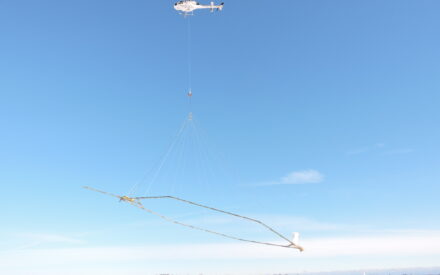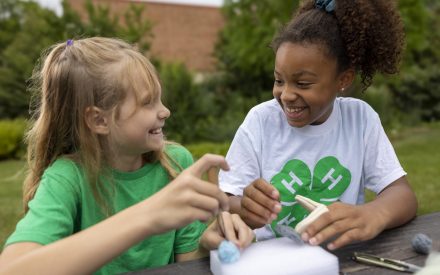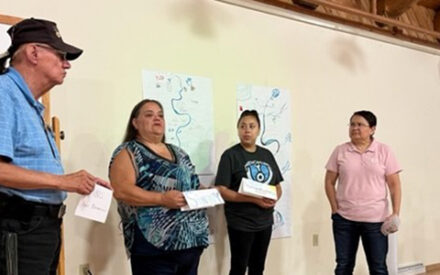For over 25 years, the Water Action Volunteers program (WAV) has provided free training and equipment for volunteer stream monitors and local partners across Wisconsin who are interested in monitoring the water quality of wadeable streams and rivers in their local watershed.
WAV empowers interested youth and adults to become stewards of their local waters by providing free monitoring equipment, hands-on field and virtual trainings, clear and accessible monitoring protocols, and advanced learning experiences to grow their knowledge of aquatic life, common pollutants and water quality issues, and other relevant topics. WAV provides support for baseline stream monitoring, nutrient monitoring, continuous temperature monitoring, conducting stream habitat assessments, and has expanded to include aquatic invasive species (AIS) monitoring with Project RED (Riverine Early Detectors). We also strive to build the capacity of over 41 partner organizations who coordinate local volunteer stream monitoring groups.
Training New & Returning Volunteers
One of the goals of WAV trainings is to build the capacity of a new partner to support and train stream monitoring volunteers, all while getting their new volunteer monitoring group up and running. This focus is critical for expanding the reach of our statewide program to support volunteers across 72 counties. WAV staff provided 14 volunteer stream monitoring trainings in 2023 across 11 counties, launching new stream monitoring groups for five new partner organizations. In 2023, partners trained 162 new volunteers and WAV staff trained 72 new volunteers, with 234 new volunteers trained overall. We also delivered five virtual training webinars to provide additional critical skills and information to volunteers and partners to successfully collect and enter water quality data, attended by 142 participants.
To provide advance learning opportunities to the volunteer network with the goal of empowering volunteers to become local stewards and advocates for their waters, we delivered four “Winter Water Talks” live webinars attended by 369 people. We also delivered in-person presentations and workshops on aquatic life and data interpretation via five events attended by 107 people.
Improving Accessibility & Volunteer Diversity
Expanding access to volunteer stream monitoring is a core area of focus as well. In 2023 we included accommodations language on all registration forms and in promotional materials to welcome diverse audiences and abilities to participate. We also held two listening sessions with Latino community members in partnership with a local non-profit, Wisconsin EcoLatinos, and the UW–Madison Arboretum. These sessions were attended by 16 adults and youth, to begin to expand access to WAV with this underserved audience. In 2024 we will be taking action to increase access based on lessons learned.
Developing Program Capacity & Sustainability
A core aspect of our program is building the capacity of our 41 partners who coordinate volunteer stream monitoring groups to achieve local watershed and water quality goals. We also trained five university students to provide critical support to implement the WAV program and expand our capacity to do this work.
Communicating Results & Impact
WAV continues to improve access to volunteer-collected water quality data via an online dashboard. This WAV Data Dashboard was visited 1,300 times by 643 unique users in 2023. We also communicate monitoring information, water quality and stewardship stories, and advanced learning opportunities via our e-newsletter, which was opened and viewed by 10,501 non-unique contacts in 2023.
Providing High Quality Stream Data
In 2023, WAV volunteers monitored 600 unique stream sites across Wisconsin for water quality, greatly expanding the number of streams with water quality information
- 130 of these sites (22%) were in watersheds with a Nine Key Element Watershed Plan, meaning their data helps to inform long-term changes as a result of changes occurring on the land to address water quality issues.
- 54 of 72 counties (75%) had active WAV stream monitoring sites.
The program continues to see increases in volunteer participation as new volunteers are trained and join the program; 526 volunteers contributed this water quality data, though this is likely an undercount since additional monitoring team members beyond the person submitting the data are often not represented. In an end of year survey with over 300 respondents:
- 96% of new volunteer respondents said they felt “somewhat” or “very” prepared to start collecting data on their stream, after attending a WAV training.
- 74% of respondents plan to return as a volunteer in 2024; 18% said they weren’t sure.
- 84% of respondents felt an appreciation of the natural world (i.e. noticing changes or learning new things) while participating in WAV stream monitoring and events.
- 74% of respondents felt connectedness (i.e. to my community, to myself, or to the world around me) while participating in WAV stream monitoring and events.
In summary, volunteers value participating in the program, they feel prepared to monitor, the majority plan to return to monitor next season, and they enjoy mental health benefits and a sense of connection while spending time outdoors monitoring a local stream.
Download Article

 Depth-to-Bedrock: Updated Mapping & Decision-Making
Depth-to-Bedrock: Updated Mapping & Decision-Making Building High-Quality Programs to Help Youth Thrive
Building High-Quality Programs to Help Youth Thrive Nature’s Navigators: Supporting Neurodiverse Learners
Nature’s Navigators: Supporting Neurodiverse Learners Centering Culture & Language in Leadership Programs
Centering Culture & Language in Leadership Programs


